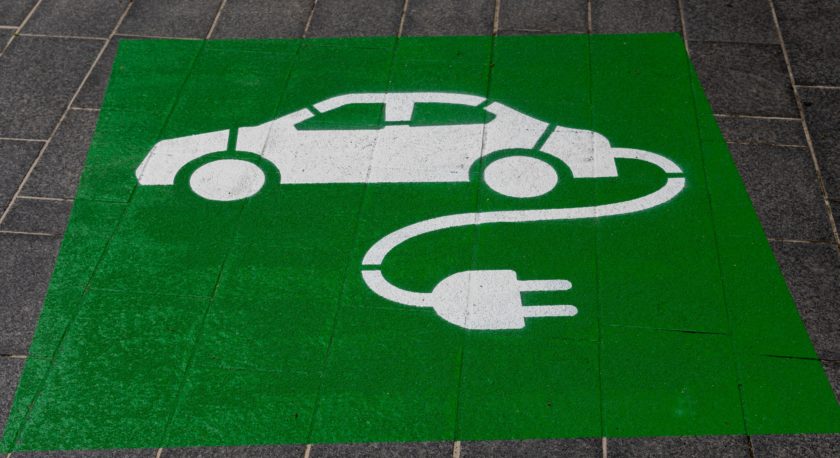Despite the progress being made in the battle against climate change and biodiversity loss, the pace and scale of efforts need to dramatically increase, according to Tom Atkinson, portfolio manager at AXA Investment Managers.
Global warming thresholds set out in the Paris climate agreement are in danger of being breached before 2027[I]. Earth’s biodiversity is also deteriorating at an “alarming” rate, causing damage not only to the natural world but to wider society and the global economy.
Technological innovations are key to driving efforts to combat these threats, and present a significant opportunity for investors to meet both investment and climate-focused goals.
Innovation in engineering and digital technology is driving global climate goal progress. Consumer momentum and government policy are also helping to spur on the development of technologies able to make an impact.
The introduction of the US Inflation Reduction Act (IRA) should spearhead a new wave of growth and innovation, while Europe’s Green Deal Industrial Plan aims to create a more supportive environment for scaling up the European Union’s manufacturing capacity for net zero technologies and products.
This backdrop should drive profits for the companies delivering game-changing tools which secure widespread adoption. This will create opportunities for portfolios if investors can closely track some of the key areas where this impact can be greatest.
These are some of the most exciting technological advances aiming to secure a net zero future.
1. Low-carbon transport
The combination of robust policy support in key markets, a wave of new product launches and continued technological innovation is supportive of rapid adoption of EVs. Lower usage of combustion engines is vital as passenger cars are the largest contributor to transport sector carbon emissions, at 39%.[ii]
Consumer appetite for EVs is accelerating. The IEA expects EVs to account for 60% of total new car sales across China, Europe and the US by 2030, mitigating the need for up to five million barrels of oil each day.[iii] The whole EV supply chain should benefit from increasing adoption – including better batteries, charging stations and semiconductors which can minimise power loss and support performance.
Battery performance is a hurdle. Typically EVs can drive 100 to 300 miles before recharging but specialists including CATL and Samsung SDI are pioneering in this area.[iv] Samsung is developing a high-capacity solid state battery that will enable an EV to drive further on a single charge. It expects to commercialise this breakthrough in the foreseeable future, a potential gamechanger for the industry.[v]
2. Smart energy and renewables
Renewable energy costs are generally becoming cheaper than fossil fuels and the backdrop for clean energy growth – i.e., wind, solar and batteries – is very positive. Growth in both technologies will be driven by their compelling economics, including continued improvements in efficiency and technology, and likely ongoing government policy support.
Among leaders in this area is First Solar, the largest utility-scale solar PV manufacturer in the Western Hemisphere, which has developed a technology to increase the energy yield of its solar panels.[vi] There are specialists in the residential solar sector such as Enphase, which uses cutting-edge microinverter technology to turn sunlight more efficiently into electricity at the household scale.[vii]
Wind and solar are intermittent forms of energy and we need large scale storage to even that out. This is where battery energy storage systems (BESS) offer a compelling solution, and the companies involved in this technology such as NextEra Energy are scaling up this technology fast.
Ultimately, the long-term goal is to see homes and businesses become independent from the traditional power grid. Currently market penetration is low but solar is the cheapest form of renewable energy and the growth potential is considerable.”
3. Agriculture
Agricultural technology – or ‘agritech’ – describes the use of technology across the agriculture sector with the aim of improving crop yields, farming performance and bolstering profitability, in a climate and biodiversity friendly manner.
The technology spans genetics, big data, machine learning and even artificial intelligence (AI). For example, UK animal genetics company Genus breeds pigs and cattle through selective breeding, which can produce high-quality meat and milk more efficiently and sustainably. Genus is also using gene editing to improve resilience to costly farm animal diseases.
Elsewhere, US group Valmont deals in precision irrigation, where sensors look for signs of drought or heat stress in soil. US firm John Deere has developed its See & Spray system which using computer vision and machine learning specifically targets weeds in corn, soybean and cotton.
4. Waste management and recycling
AI has been identified as a potentially crucial tool for streamlining the identification and processing of recyclable materials with big potential productivity gains that could benefit investors. Norwegian firm Tomra provides advanced collection and sorting systems, and food processing, by employing sensor-based sorting and grading technology which uses deep learning, a subset of AI.
Innovative US industrial company Kadant is pioneering technologies to improve the efficiency of recycling and waste processing. Kadant makes smart recycling equipment, which provides operators with insights into the quality of wastepaper feedstocks as well as the optimal ways to process waste wood products in order to maximise yields.
5. The next big things
There is exciting progress being made in areas such as sustainable aviation fuel and carbon capture and storage (CSS) – where CO₂ is caught before it goes in the atmosphere. Then there is direct air capture technology which extracts CO₂ directly from the atmosphere at any location.
Green steel is manufactured by a process which emits less greenhouse gases than conventional steelmaking, often by using green hydrogen instead of fossil fuels. Equally, analytical and big data technologies are supercharging understanding of the complex and multi-faceted ways in which biodiversity is being damaged and helping guide how best to respond.
Ultimately, there will not be a single silver bullet but rather many solutions which take the fight to climate change and biodiversity loss. All efforts which can improve processes, efficiency, design and construction across industries will add to CO₂ reduction efforts, and in turn, create new potential investment opportunities.






























